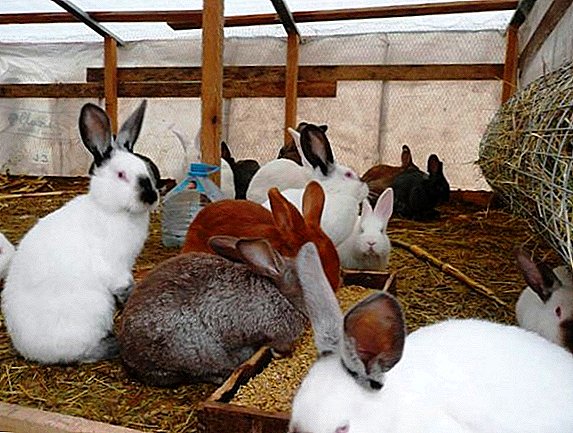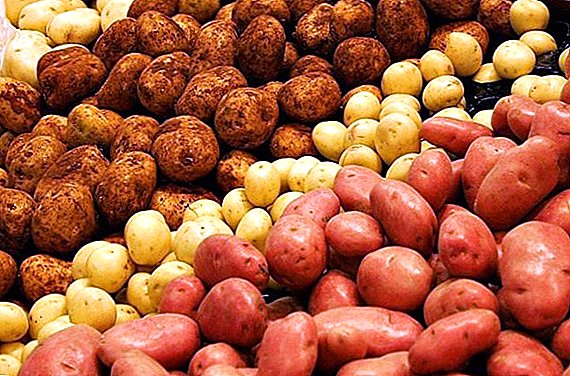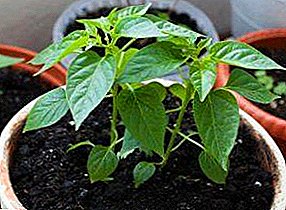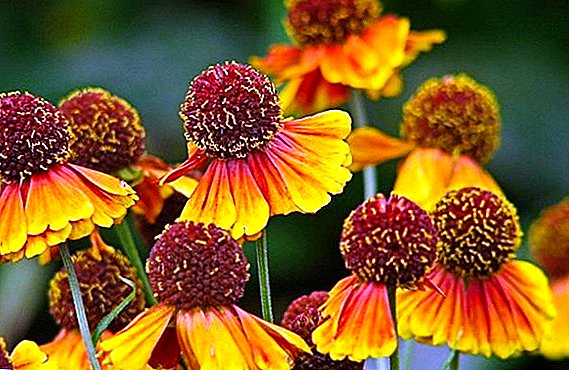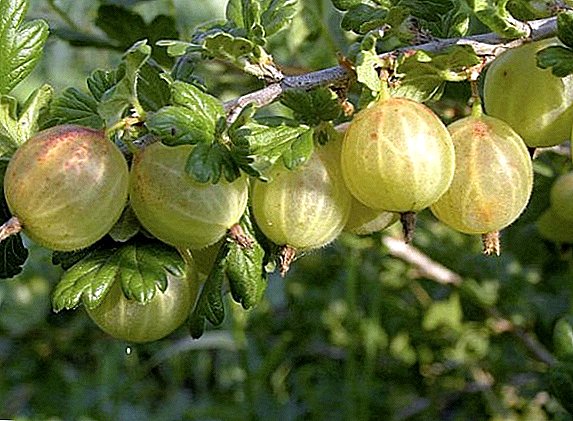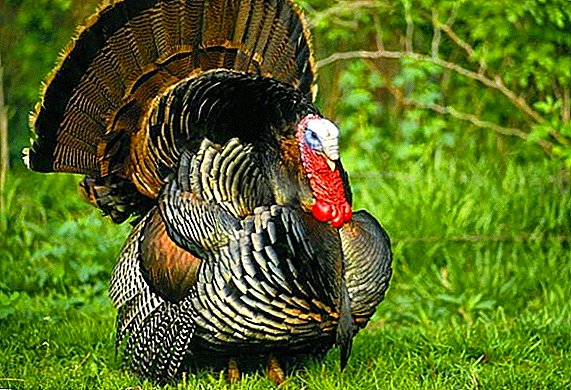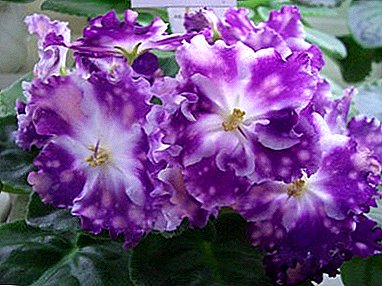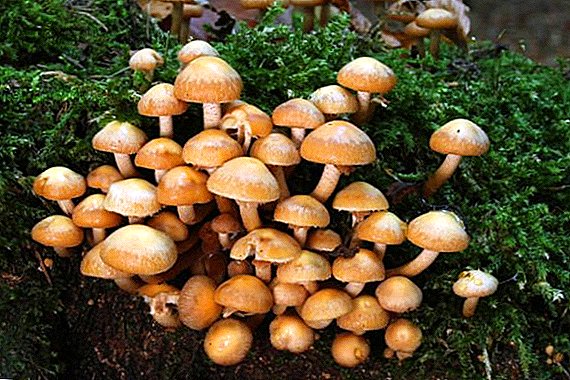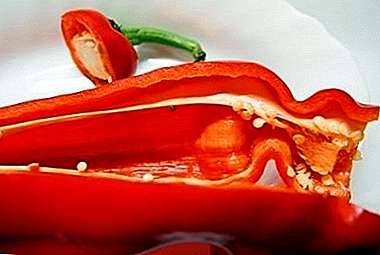
Pepper "Ramiro" unpretentious in growing.
We love gardeners for a pleasant taste and delicate aroma.
It is widely used in cooking for cooking first, second courses and sauces.
General description of the plant
"Ramiro" - is one of the most popular types of sweet pepper, it has an elongated shape up to 30 cm in length. The number of pieces on one bush 10-12. Thickness 5-6 mm. The weight of one pepper varies from 90 to 160 gr. The taste of pepper is very sweet. Pods endowed with a pleasant delicate aroma. Ripens before the usual varieties. Pepper is widely used in cooking. It is easy to bake. Used for the manufacture of thick soups and sauces. Pepper color: yellow, orange, green, white.
A photo
The photo shows Ramiro pepper:





Home care
 The plant needs mulching.
The plant needs mulching.
This procedure protects the soil from drying out and weeds.
When processing shoots, pepper stalks are tied up, since Ramiro has fragile shoots that can easily break.
It is recommended to plant tall crops around pepper bushes. They protect peppers from drafts and strong winds.
Planting seeds
In the absence of a greenhouse, Ramiro pepper seeds are sown in February. Seeds are kept in water or a solution of potassium permanganate until complete swelling. Then they are laid out on a cloth or cotton for 2-3 days.
Reference! Seeds are placed in small containers of diameters of not more than 10-12 cm.
For planting seeds suitable friable light soil. The soil can be purchased at flower shops or cook yourself. For this we need humus, sand and earth. The mixture is stirred in equal proportions. At 3 kg of this mixture, you must add a glass of ash.
Seeds are planted to a depth of 1-1.5 cm. Shoots should appear the next day after planting. Sprouts carefully watered and covered with glass.
Growing seedlings
 Containers with seedlings should be in a well-lit place.
Containers with seedlings should be in a well-lit place.
The optimum temperature for growth is 22-23 ° C. At night, it should not fall below 15 ° C.
After the growth of fragile shoots in height more than 5 cm, the temperature should be increased by 5-6 ° C and should vary in the range of 26-28 ° C. Water the seedlings not too often.
Frequent watering provoke root rot. But the soil should not be over dried. 2-3 times in 7 days the capacity is ventilated. This procedure will allow the seedlings to grow well.
Important! When the soil dries, the seedlings dry quickly. When waterlogging - roots rot.
Transplantation in open ground
On the garden plot pepper precursors should be zucchini, cucumbers, pumpkin, cabbage. You can not put the pepper in the same place. In this case, the seedlings will be small and unsuccessful. The beds must be done with a rise of 20-30 cm.
Pepper of this variety can be divided by tall tomatoes. The soil for transplanting should be light. A week before landing, the ground is decontaminated. For this procedure, copper sulfate is diluted in a bucket of water. The ground is sprayed from a sprayer.
Transplant seedlings produced in May or June. Transplant plan: 45x45 cm. It is necessary to place the seedlings in the hole to the same depth at which it was located in the planting tanks.
Fertilizer
During flowering, you can use leaves woodlice, nettle. Great for a coltsfoot plant. You can make dandelion and plantain tops. The leaves are mixed with 10 kg of manure. In the mixture add 1 cup of ash.
During fruiting, the pepper is fed with a mixture of bird droppings diluted in 5 liters of water. You can use rotted cow dung diluted in 10 liters of water.
Watering
 Watering is carried out with warm water. The optimum water temperature is 25-28 ° C.
Watering is carried out with warm water. The optimum water temperature is 25-28 ° C.
Before flowering, the plant is watered 1 time in 7 days.
In hot weather - 2 times in 7 days. Norm: 10-12 liters per 1 square. m
During flowering, watering increase to 3-4 times in 7 days. The rate of this period: 14-16 liters per 1 square. m
Harvesting
Depending on the region, they are harvested 65-95 days after the appearance of the fruit. Pepper is recommended unripe. This will increase the use of pepper, as "Ramiro" has a weak keeping quality. Store the crop in cool rooms or refrigerators.
Benefit and harm
Pepper contains antioxidants. He is able to thin and renew blood. It has a calming effect on the nervous system. It is used for prolonged depression and nervous breakdowns.
Reference! Ramiro is able to increase hemoglobin in the blood. Fruits contain a number of useful substances and vitamins. Contains: iodine, zinc, nutrients, carotene, acids.
Do not abuse the pepper in diseases of the stomach, especially ulcers and gastritis. The use of "Ramiro" in large quantities is not recommended for pregnant and lactating women.
Diseases and pests
 Pepper can hurt the stolbur. Symptoms of the disease: yellow leaves, wilt, fruits of irregular shape.
Pepper can hurt the stolbur. Symptoms of the disease: yellow leaves, wilt, fruits of irregular shape.
The disease can infect insects that feed on plant sap.
For prevention, it is necessary to carefully loosen the soil and timely remove weeds.
When the disease appears, the plant is sprayed with purchased chemical solutions.
Pepper "Ramiro" propagated by seed. Likes loose, light soil. Heat-loving, does not tolerate drafts. Can be grown in greenhouses. In hot weather, watering is carried out 3-4 times in 7 days. Harvesting takes place on the 65-95 day. The fruits act soothingly on the nervous system. Endowed with a rich amount of vitamins and trace elements.


